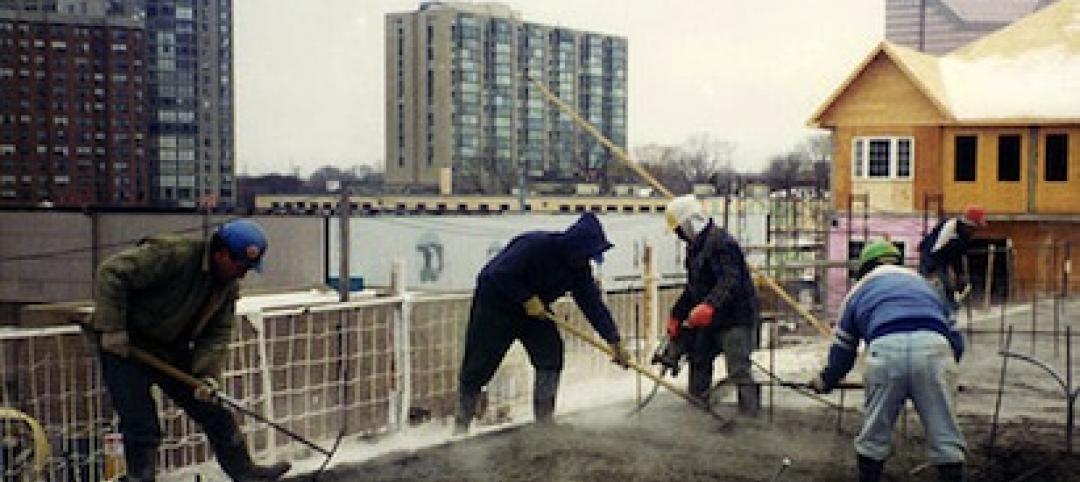A consortium of construction firms, property developers, and building engineers have pledged to drive down the carbon emissions of concrete.
The new ConcreteZero initiative consists of 17 companies that have pledged to bring the proportion of “low-emissions” concrete they use to 30% by 2025 and 50% by 2030. Major European construction firms including Laing O’Rourke, Mace, Skanska UK, and Willmott Dixon; property owners and developers including Canary Wharf Group and Grosvenor; and engineering firms including Buro Happold and Thornton Tomasetti are aiming to use only zero-carbon concrete by 2050.
The 2050 goal is a high mark that will likely be hard to reach. Cement production accounts for between 7% and 8% of global carbon emissions today. With increasing demand for concrete for construction, and the carbon-intensity of global cement production growing, emissions from concrete production have been rising in recent years.
But options to reduce the carbon-intensity of concrete are broadly available, practical, and cost-effective today, building decarbonization experts say. ConcreteZero is modeled on similar Climate Group initiatives including a pledge to boost the use of renewable energy to commit to sourcing more low-carbon steel.
Related Stories
| May 15, 2014
'Virtually indestructible': Utah architect applies thin-shell dome concept for safer schools
At $94 a square foot and "virtually indestructible," some school districts in Utah are opting to build concrete dome schools in lieu of traditional structures.
| Feb 14, 2014
Must see: Developer stacks shipping containers atop grain silos to create student housing tower
Mill Junction will house up to 370 students and is supported by 50-year-old grain silos.
| Feb 5, 2014
Extreme conversion: Atlanta turns high-rise office building into high school
Formerly occupied by IBM, the 11-story Lakeside building is the new home for North Atlanta High School.
| Feb 5, 2014
7 towers that define the 'skinny skyscraper' boom [slideshow]
Recent advancements in structural design, combined with the loosening of density and zoning requirements, has opened the door for the so-called "superslim skyscraper."
| Jan 28, 2014
2014 predictions for skyscraper construction: More twisting towers, mega-tall projects, and 'superslim' designs
Experts from the Council on Tall Buildings and Urban Habitat release their 2014 construction forecast for the worldwide high-rise industry.
| Jan 24, 2014
Structural concrete requirements under revision: ACI 318 standard
The American Concrete Institute (ACI), an organization whose mission is to develop and disseminate consensus-based knowledge on concrete and its uses, is finalizing a completely reorganized ACI 318-14: Building Code Requirements for Structural Concrete.
| Jan 7, 2014
Concrete solutions: 9 innovations for a construction essential
BD+C editors offer a roundup of new products and case studies that represent the latest breakthroughs in concrete technology.
| Dec 12, 2013
Book announcement: The economic performance of sustainable construction
Thirty specialists from around the world challenge the question of (higher) costs related to sustainability of the built environment
| Dec 10, 2013
16 great solutions for architects, engineers, and contractors
From a crowd-funded smart shovel to a why-didn’t-someone-do-this-sooner scheme for managing traffic in public restrooms, these ideas are noteworthy for creative problem-solving. Here are some of the most intriguing innovations the BD+C community has brought to our attention this year.
| Nov 27, 2013
Wonder walls: 13 choices for the building envelope
BD+C editors present a roundup of the latest technologies and applications in exterior wall systems, from a tapered metal wall installation in Oklahoma to a textured precast concrete solution in North Carolina.
















